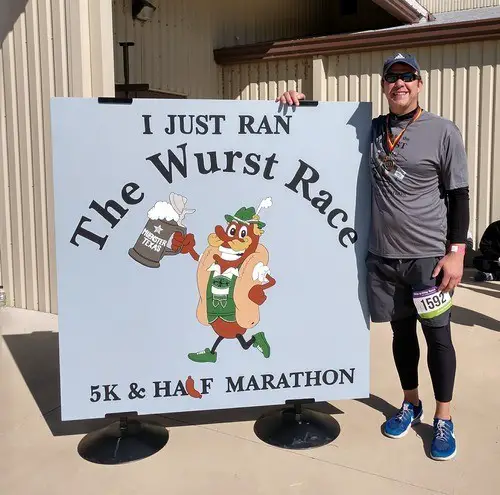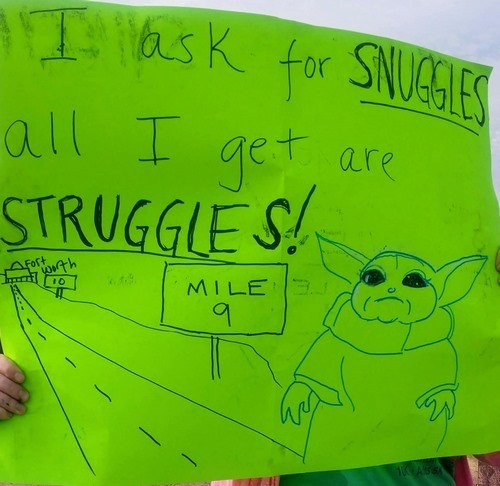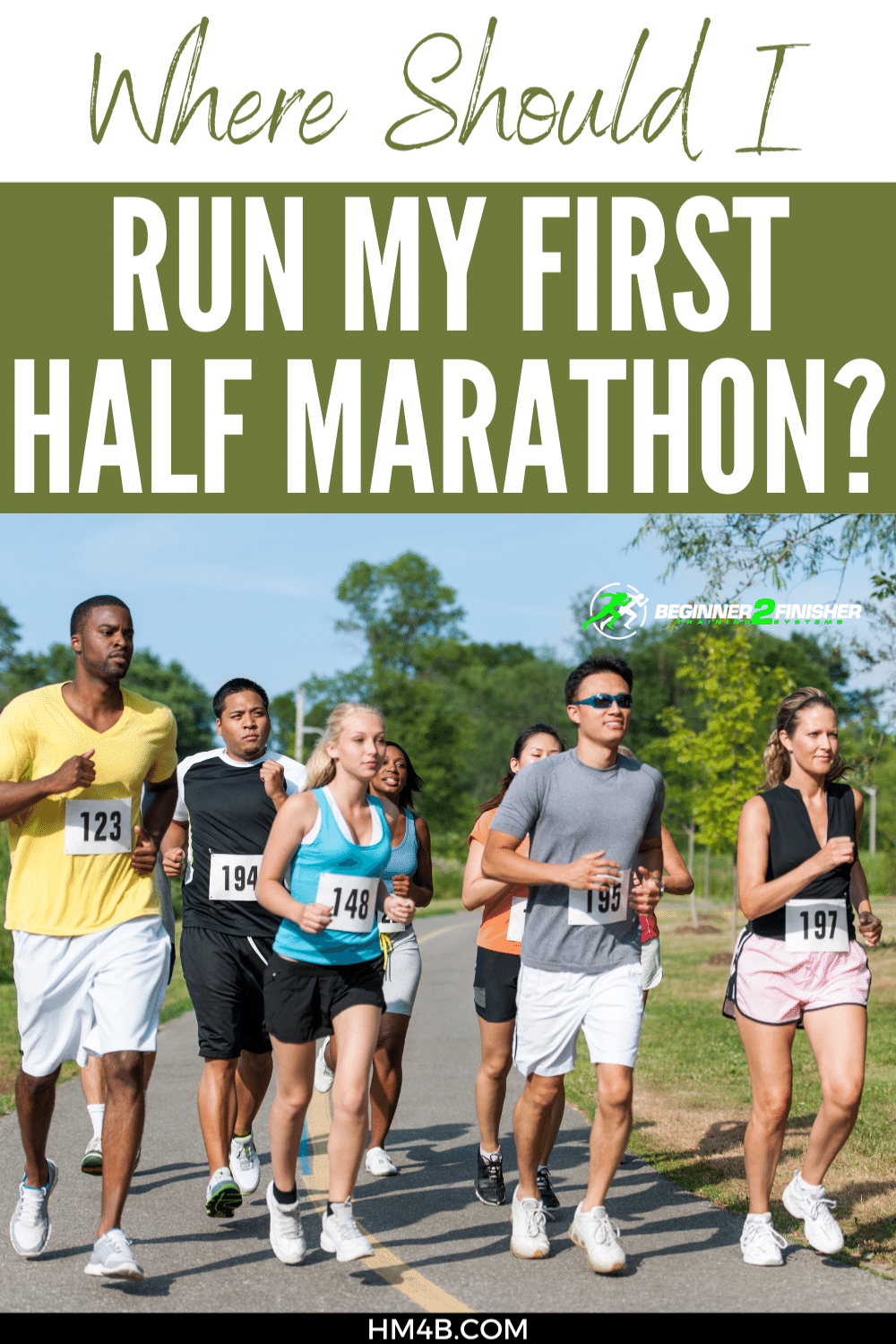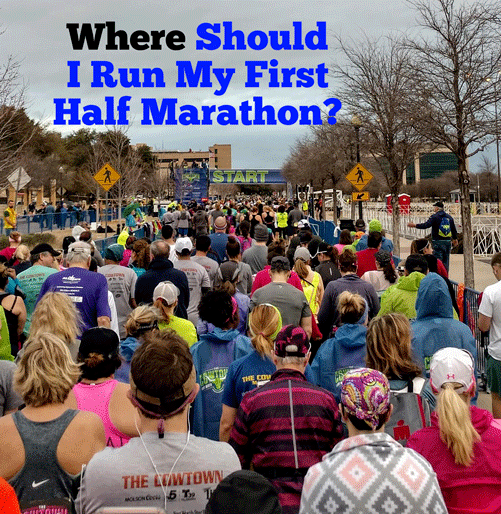There are several factors that need to be considered when running your first half marathon. How long do I need to train for? How much fuel will I need for my race? Another big factor in making your first half marathon memorable and enjoyable is racecourse selection. A question often asked by the first-time half marathoner is, “where should I run my first half marathon?”
Where should I run my first half marathon?
When deciding on which race to signup for a first time half marathon should consider the following:
- Time of year
- Average temperatures
- Wind
- Course elevation gains
- Physical Race Location
- Course Difficulties
- Race History
- Course cut-off times
- Race Size
- Post-race celebrations
- Awards
- Race costs
- Charitable cause
- Water/aid stations
- On-course medical aid
- Day/Time of the race
- Sag-wag enforcement
- Social engagement
Time of Year
The time of the year is going to be a major enjoyability factor when deciding when to race your half marathon. I highly discourage running your first half marathon in the Winter or the Summer months.
The summer requires a lot more fluid and your chip finish times generally suffer during the hot months. During the winter there is the possibility of extremely cold weather, including sleet, snow, and ice. Plus you’ll have to layer up and then take em off after your body warms up.
For a detailed post of the dos and don’ts of running in cold weather, check out:
How To Run In Cold Weather – Beginner’s Guide
The optimal time to run your first half-marathon is at the tail end of the winter or in the spring. The middle of fall and early winter are also great times to knock out your first half marathon.
Average temperatures
If you don’t think that warmer temperatures affect your running speeds, think again. In 2012 a study was conducted involving 6 major marathons. The study found that “The more the temperature increases, the larger the decreases in running speeds.” The study also determined, “The optimal temperatures to run at maximal speed for men and women, varied from 3.8°C to 9.9°C (37.9°F – 49.8°F)” (Impact of Environmental Parameters on Marathon Running Performance, Nour El Helou + 8 contributing authors).
Again, as noted above, the time of year you run your half marathon will greatly affect your race performance due to the swings in temperatures.
Wind
The wind can either hinder your race performance or hinder your race performance. If you’re running against the wind (into the wind) then your overall performance decreased, unless you were an elite runner. The tailwind favored all runners and they saw an increase in their race performance.
“tailwind was related to improved performances of all groups, increasing wind speed was also related to worsened performances, but not for elite groups” (The role of weather conditions on running performance in the Boston Marathon from 1972 to 2018, Knechtle, Di Gangi, Rüst, Villiger, Rosemann, Nikolaidis)
Course elevation gains
When selecting your half marathon location try to find a race with close to zero elevation gain.
One relatively flat course is Surf City USA Half Marathon. This course has a total elevation gain of around 100 feet. Which translates to little uphill running. When you throw in a higher elevation gain, your body will require more exertion and more energy spent getting your body up those hills.
I really can’t speak too much on this because one of my first half marathon races was in a town called Muenster, TX. Ironically the race is run around October, so they named the race The Wurst Half Marathon. Yes, It is a beast of a race with an elevation gain of over 800 feet.

Physical Race Location
If you’ll be traveling to your first half marathon race, you will need to be prepared for unseen circumstances. Packing your race fuels and night before meals will also be critical especially if you’re in a foreign land where they don’t have choices of foods that you would want to eat before your race.
The local allergens in the air could also affect your race day performance. Check the weather and local allergens in the area you are traveling to. Bring any antihistamines or allergy medicines you might need.
Some race locations are also more humid, dry, or even have drastic elevation changes that you might need to account for when traveling to a race.
Course Difficulties
Is part of the race run in the woods? Is part of the race run on a gravel road? Are there any rocks or technical aspects of the course that might not be conducive to first-time half marathoners? These are questions that you should look at when determining if the race course your selected is a viable candidate for your race.
First Half Marathon Race
If this is your first half marathon race, check out these 21 tips to help ensure that you survive your first half marathon race.
Race History
If you want your first half marathon race to be your absolute best, we all do, you might want to give a quick scan of the last race history. If you’re trying to place in your age group or win the whole race, taking a peek at the history can give you a feel for the competition.
What I’ve found is that the bigger city races are usually highly competitive. The smaller local races are generally less competitive. I’ve managed to place 2nd twice and 1st once in my age group for a half marathon race because I raced a small local half marathon.
Course cut-off times
Do you need more than 4 hours to finish your half marathon race? If you do then choosing a race that is also running a full marathon or ultra-marathon on the same course will be beneficial to you. Since full marathons are normally open for racers for at least 6 hours plus. Don’t count this factor out especially if you haven’t trained near as much as you should have.
If you haven’t trained as much as you want to so that you could run your half marathon, you could always consider – can I walk a half marathon in 4 hours?
Race Size
The race size is a direct relationship with the crowd size. The spectator size can be a huge difference during your race day motivation. The more fans, the louder the noise, the more people will cheer for you. It’s exfiltrating to run in a big city race. For another big boost on race day, write your name on your shirt with a big black sharpie or another well-seen color. People will see your shirt and call out your name making you feel even more special.
Fans also love holding up signs that make you smile and laugh. Here is a sign I saw at mile nine during one of my recent half marathons:

For other race-day motivational boosters, check out – 5 simple ways to boost your motivation on race day
Post-race celebrations
The size of the race will also determine how big the party is afterward. We all love to bask in the glory and strut around wearing our shiny medal(s). I’m not saying that the post-race celebrations for smaller races can’t be fun, there are just normally more people to mingle and party with.
Are you looking for a great way to display your medals? Check out the post I wrote reviewing the 9 best medal display hangers for runners.
One of the smaller half marathons I raced had a two-hour break before you race again in the 0.5 beer mile challenge. You have to run around a small track with a full beer and not spill it past a certain line. I came in last place during the beer race. Having to run again after your muscles have relaxed for two hours after running 13.1 miles – hurts. It wasn’t fair because the winners of the beer race were 5K runners, not half marathoners!

Awards
Does the race award cash prizes? Most runners aren’t aiming to claim the top cash prize for placing in the top overall 3. If you’re wanting to place in your age group, some race with separate age group in groups of 5 such as 20-24 or 25-30, etc. Other races will clump you into groups of 10 such as 30-39 or 40-49, etc.
Although this probably isn’t the most important factor when considering which race to run, it doesn’t hurt to take a look at how they award your effort. A participation award is a great way to grasp the glory of finishing a half marathon, but placing in your age group is just remarkable!
Race costs
Why are 5Ks much cheaper than half marathons and full marathons. The main reason is that you will need more refreshments on the course when compared to a 5k runner. You’ll probably eat more at the end of the race as well. Plus your toll fee should be more because you are running longer on those paved streets -lol!
I have paid less than $50 for a half marathon registration and as much as $150 for a half marathon registration. A lot of businesses will sponsor your registration fee if you simply ask them to. Heck, they may even want to make a T-shirt with their logo on it and force you to run with it on race day.
Charitable cause
Some runners end up running a half marathon because of the cause such as the fight against breast cancer or any other charitable cause. It’s great when you can get a group of people together to help donate to a cause in need of help.
Water/aid stations
If you’re running during the summer or simply when it’s hot outside, you’re going to want to know where the water/aid stations are at. Also, you’re going to want to know how many are on the course. This could be a big determinant of whether or not you should carry your own water during a half marathon race.
I have personally carried water in a hydration pack during about half of my half marathon races. It’s a question worth looking into and I wrote a post that dives into the topic – should I carry water during my half marathon race?
On-course medical aid
All big races will have several medical personnel on the racecourse. During one of my recent races, the medical personnel actually jogged within the crowd of people to cover more area and look for any possible fallen runners. Smaller races will normally not have near as many medical personnel attending to the race.
Day/Time of the race
The majority of races will fall on a Saturday. There are a few races that fall on Sunday due to race challenges (back-to-back race each day). The earlier the race the earlier you have to wake up. The earlier you wake up the earlier you’ll have to eat.
Don’t forget about figuring out the logistics of when to get up so you can leave at a decent time to avoid possible traffic. Most races have cut-off times for late arrivals.
Sag-Wag enforcement

Have you ever been escorted by the dreaded Sag-Wag? The sag-wag is a vehicle that paces the last runner in a race so that the cleanup process behind them can start. The sag-wag also picks up racers that have given up or that have fallen way behind the pack and pace cut-off time.
How long do half marathons stay open for runners?
Social engagement
Are your friends or co-workers running the race? This could have a huge deciding factor that trumps all other reasons for deciding which race to run. Social running is one of the biggest reasons why people run. We like to feel part of something bigger and greater than us. What better way to share an experience you’ll remember for a lifetime by running with someone that you know.
It’s your first half so make a good decision
You want to make your first half marathon enjoyable. Don’t make it a raw crude memory by not selecting an optimal season to race in as well as optimal temperatures. The weather is one of the biggest factors in what could affect your race day performance.
Looking for bucket list-worthy half marathons to run state-by-state. Check out 50 Bucket List Worthy Half Marathons.
| Help support me and subscribe to my YouTube channel. YouTube video - 30 ways to make your runs less painful! Coach Scott's Credentials:
|
To sign up for a FREE half marathon training schedule, log sheet, and pace predictor CLICK HERE.

Recommended gear for runners
Connect with me:
| facebook.com/BeginnerToFinisher/ |


3 thoughts on “Where Should I Run My First Half Marathon?”